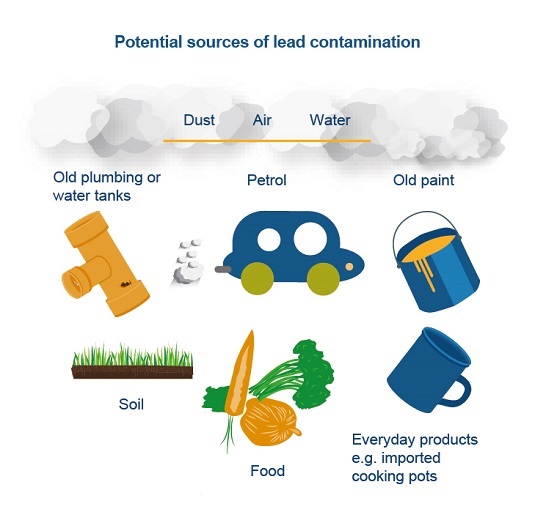The ‘Stay Safe from Lingering Lead’ campaign uses videos to help alert home renovators and gardeners to be cautious and wear protective clothing when working around lead in old paint or soil.
The social media campaign is particularly targeting the Sydney Inner West, Newcastle and Wollongong council areas.
Lead in the environment
Lead is a naturally occurring element that has been used in a range of household, recreational and industrial products.
Many uses of lead have been phased out, including lead paint, leaded automotive fuel and some forms of solder used in plumbing. Lead continues to be used in lead-acid car batteries, some forms of solder, waterproof flashing for roofs and gutters, and radiation protection.
Lead can therefore be found in the environment in many forms, including in:
- lead-based paint on houses built before 1970, and lead paint flakes around structures
- lead dust from industrial and domestic sources in soil, and in roof and wall cavities
- lead waste from industrial sources in soil
- some household products
- some vegetables and plants that are grown in contaminated soil
- eggs and other animal products from animals reared on contaminated soil.
Lead and your health
Exposure to lead is linked to harmful effects on organs and bodily functions. Elevated blood lead levels can cause anaemia, kidney problems and neurological or developmental effects.
Lead can harm people of all ages but the risks are greater in pregnant women, infants and children. Other factors that influence the impact of lead on an individual are their age and health status, the amount of lead and the duration of exposure.
If you suspect that you or your family have been exposed to lead, visit your doctor for advice.
For more information, see the NHMRC Statement and Information Paper on the health effects of lead at www.nhmrc.gov.au/health-advice/environmental-health/lead-blood-levels.
Test for lead
Find out where the sources of lead are likely to be around your home by testing all suspected lead- contaminated surfaces and materials using commercially available lead test kits. These kits are available from major hardware retailers.
If you cannot test for lead, it is best to assume that paint, soil or dust is contaminated.
Lead in your home and workplace
Sources of lead include
- waste from mines and industrial sources in soil and water (including tailings, mine waste rock and smelter slag_
- interior and exterior paint in homes built
before 1970
- lead dust in ceiling cavities, carpets,
furniture and in other places where dust tends to accumulate, and in the soil
around the home – some of this dust may be from before the 1980s when petrol
contained high levels of lead
- lead fumes from the use of tools such as a heat
gun or soldering iron to heat up a lead surface
- lead water pipes, leadlight windows, PVC
products, lead sheeting and paints in various products
- workers in a lead industry bringing dust home on
clothes or tools which can contaminate a home and family
- hobbies involving working with lead or lead
paint which can accidently expose you or others to lead

Leadsmart
The Broken Hill Environmental Lead Program, in partnership
with the EPA and NSW Health, has developed the Lead
Smart website to let Broken Hill residents and the NSW community
know about the local lead issue, how and where children get exposed to lead,
things carers and children can do to minimise lead exposure, and the importance
of blood lead screening for children under 5.
More information
- Lead exposure in children: information prepared by
NSW Health Department on the health risks of lead exposure focused on children.
- Lead information: the Australian Department
of the Environment website provides information relating to lead and various
topics such as renovation, your health, marine paints, pottery and recreational
activities, as well as a guide to renovating your home safe from lead risk.
- Lead in house paint: the Australian Department
of the Environment website provides information on lead in house paint
including the dangers, how to avoid lead risk and what is being done.
- US EPA lead information: The US EPA lead website
provides overseas information on lead issues, science and technology as well as
overseas laws and regulations.
- Lead Safe World www.leadsafeworld.com/shop
- Managing individual exposure to lead in
Australia: The
Australian Government National Health and Medical Research Council guide for
health practitioners to manage individual exposure to lead.
- Lead Alert: The six step guide to
painting your home
- DIY Safe: The NSW Health Department
website provides useful information to enable householders to sensibly and
safely manage the risks arising from lead in and around their homes.
- Lead risk at work: The
SafeWork NSW website provides information regarding exposure to lead in your
workplace.
- The National Painting and Decorating Institute have developed a
series of lead safety training videos including
- Podcast Lead Poisoning: a
silent epidemic: the ABC radio background briefing program on lead poisoning
during an increase in home renovations during the Queensland floods in
2012.


